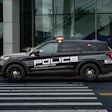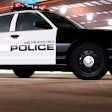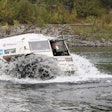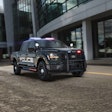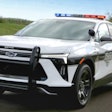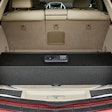Every fall, the manufacturers of law enforcement vehicles gear up to have their vehicles tested by two of the nation's premier law enforcement agencies: the Los Angeles County Sheriff's Department and the Michigan State Police. What began as in-house testing to help these agencies determine the best vehicles for their own purposes has evolved into testing that is relied upon by law enforcement agencies throughout North America, and to a lesser extent internationally.
Depending on who you talk to, both agencies claim to have been the first to conduct these comprehensive tests, and that's only the start of the good natured rivalry exhibited by the staffs at each department. Whatever the result of the "We were first..." tug of war, it's safe to say that both agencies started vehicle testing in the early 1970s.
At the time, there was little information to go on, other than manufacturers' claims and anecdotal info from "old-timers" among the patrol ranks. Everyone had their favorite vehicle, and easily found much to dislike about other makes and models. This "tastes great-less filling" approach just wasn't good enough, so the LASD and MSP empirical test models were developed, and continue to evolve to this day.
Although both agencies' efforts are highly respected, the testing methodologies of each agency differ significantly. The respective testing models clearly reflect elements of each agency's primary mission, with other aspects of law enforcement vehicle usage thrown in for good measure. The end results are two separate and distinct test models that complement each other in many ways. While each agency's tests are comprehensive in their own right, taken together, a true picture of comparative law enforcement vehicle capabilities comes into focus.
Both departments separate test vehicles into two general categories: those suitable for high-speed pursuit driving (considered general service patrol vehicles), and those that aren't (classified as special service vehicles).
The Los Angeles Model
This is probably a good place to acknowledge that, although the Los Angeles tests are done under the auspices of the LA County Sheriff's Department, members of the Los Angeles Police Department participate as well. Many of the tests are shared equally; if four different drivers are set to test a particular vehicle, there will typically be two officers from each agency doing the testing.
The Los Angeles tests consist of a driver's subjective evaluation, conducted over a 1.57-mile-long high-speed driving course. This test is designed to evaluate, identify, and eliminate obviously unacceptable vehicles, due to vehicle instability or other factors. Vehicles that fail here are not tested any further.
Acceleration and brake testing come next, followed by a "pursuit course" conducted on a closed 2.45-mile city street course, incorporating many turns and other typical street driving challenges. This test is timed, and again, vehicles that don't pass are not tested any further.
There are five other tests that are done on each vehicle: a heat test, wherein various vehicle fluids are measured to make sure they are within temperature specifications; tire tests, which are evaluated after completion of the 32-lap high-speed driving test; an ergonomics evaluation; a mechanical evaluation, conducted by contracted vehicle mechanics; a communications evaluation, conducted by specialists from the Sheriff's Communications and Fleet Management Bureau; and a fuel efficiency test, wherein vehicles are twice driven over a 100-mile course on city streets and freeways.
The Michigan Model
Testing by the Michigan State Police is similar in scope to the Los Angeles program, with some elements emphasized to a greater or lesser degree. Though different in some respects, the banks of tests complement each other.
The Michigan tests also involve acceleration and braking tests, conducted similarly to those in Los Angeles. One difference is that Michigan records a top speed for each vehicle (measured over a 14-mile course), while Los Angeles captures only a quarter-mile top speed. Both tests feature runs on a high-speed vehicle dynamics course, but the Los Angeles course is relatively flat, while the Michigan course (conducted at the Grattan Raceway in rural Michigan) is made up of gently rolling hills.
The MSP team combines ergonomics and communications evaluations into one rating form, which is completed by a group of officers for each vehicle, with the scores being averaged. There is no mechanical evaluation reported, and the fuel economy comparison is based upon the manufacturers' EPA fuel efficiency ratings, rather than an actual driving test. Temperature and tire tests are not reported, unless there is an anomaly, which is noted in the testing results.[PAGEBREAK]
Michigan Test Results
This past fall, 2007 model year vehicles were submitted by three manufacturers: General Motors (Chevrolet), Ford, and Daimler-Chrysler (Dodge). As previously mentioned, vehicles are broken out into two categories: general service and special service. Vehicles tested in the general service category were:
- Dodge Charger 3.5-liter SPFI
- Dodge Magnum 3.5-liter SPFI
- Dodge Charger 5.7-liter HEMI SPFI
- Dodge Magnum 5.7-liter HEMI SPFI
- Chevrolet Impala 9C1 3.9-liter SPFI
- Chevrolet Tahoe PPV 5.3-liter SPFI
- Chevrolet Tahoe PPV E85 5.3-liter SPFI
- Ford Police Interceptor 3.27 4.6-liter SPFI
- Ford Police Interceptor 3.55 4.6-liter SPFI
Vehicles tested in the special service category were:
- Dodge Magnum 3.5-liter SPFI
- Chevrolet Tahoe (4WD) 5.3-liter SPFI
- Ford Escape Hybrid 2.3-liter SMFE
- Ford Expedition 5.4-liter 3V SMFI
- Ford Expedition EL 5.4-liter 3V SMFI
- Ford Explorer 4.6-liter SPFI
- Ford F-250 Crew Cab 5.4-liter SMFI
Very detailed test results can be downloaded from the Michigan State Police Website (www.michigan. gov/msp, and click the link labeled Police Vehicle Evaluation).
Here's an executive summary:
The Dodge vehicles dominated the acceleration testing in the general service category, and were also very strong-but with some competition from the Ford Explorer and Expedition models-in the special service category. The fastest general service vehicle was the Dodge Charger 5.7-liter, at 148 mph, with the Chevrolet Impala coming in second at 139 mph. The fastest special service vehicle was the Dodge Magnum 3.5-liter, at 116 mph, with the Ford Expedition coming in at 104 mph.
Braking was tested to determine projected stopping distance from 60 miles per hour. Again the Dodge Magnum 3.5-liter came in on top, with the shortest projected stopping distance of 129.9 feet. The Ford Escape Hybrid was the braking champ in the special service category, with a projected stopping distance of 139.3 feet.
Note that there were Dodge Magnum 3.5-liter entries in both the general service and special service categories. The two vehicles were set up with different braking systems.
The vehicle dynamics testing was only run for the general service category of vehicles. Four drivers run five laps each, and an average time is taken. The Dodge entries dominated again, with the Magnum 5.7-liter averaging 1:37.65, and the Charger 5.7-liter averaging 1:37.69.
Ergonomics and communications evaluations are conducted by 10 officers, each independently evaluating 28 different dimensions for each vehicle on a scale of 1-10, with 10 being the highest rating. Here the clear winners were the Chevrolet Tahoe models, with average scores of 208.48 (out of a possible 280). The closest competition came from the Dodge Charger models, both averaging 192.93.
Los Angeles Test Results
All of he results for the Los Angeles testing are now tabulated and posted at www.LASD.org; click on Annual Vehicle Test.
Vehicles submitted by General Motors (Chevrolet), Ford, and Daimler-Chrysler (Dodge) were:
- Ford CVPI 3.27 differential
- Ford CVPI 3.55 differential
- Chevrolet Impala
- Chevrolet Tahoe
- Chevrolet Tahoe E-85
- Dodge Charger 6-cylinder
- Dodge Charger HEMI
- Dodge Magnum 6-cylinder
- Dodge Magnum HEMI
Acceleration was measured in increments, with the first being 0 to 20 mph, then 0 to 30 mph, etc., up to 0 to 100 mph. Additionally, acceleration from 30 mph to 60 mph and 60 mph to 90 mph was also noted. Lastly, a quarter-mile time and quarter-mile top speed were recorded.
Not surprisingly, the Dodge Magnum and Charger HEMIs ran away with the acceleration testing, with the Magnum taking honors in every bracket up to 80 mph. The Charger HEMI took the next two brackets (0 to 90 mph in 12.95 seconds and 0 to 100 mph in 15.64 seconds, respectively), and the 30 to 60 and 60 to 90 brackets as well. The Magnum HEMI turned in the quickest quarter-mile time at 14.90 seconds, while the Charger HEMI turned in the top quarter-mile speed, at 97.92 mph.
The brake testing consisted of a panic stop from 60 mph. Again, two of the Dodge products turned in the shortest stopping distance, with the Charger six-cylinder stopping shortest at 146.94 feet, and the Magnum HEMI next at 149.39 feet.
Valuable Tests
Both the Los Angeles County Sheriff's Department and the Michigan State Police go to great lengths to conduct tough, exacting, and fair testing of police vehicles and, as such, are performing a significant and much needed service to the law enforcement community.
There was a time when many agencies got their vehicles from a local dealer, or just bought them off the lot. If we were lucky, they came with a "towing package" and a heavy-duty battery. The demands of policing in this new millennium are such that these practices just will not meet our needs anymore.
As officers, we rely upon their vehicles as never before. Departments must stretch every dollar, and the motor vehicle fleet represents one of the most significant expenditures that most agencies make. Our vehicles have to be reliable and safe, and they must last through many hard miles. The testing conducted by LASD and MSP helps agencies determine which vehicles are suited for their missions and which will give them the greatest value on duty.
A retired officer and a police trainer for 20 years, Steve Ashley conducts driving and use-of-force classes for an academy in Michigan and works as a risk manager and expert witness. Ashley is a certified trainer in many subjects and has spoken at many state, national, and international conferences.











